Don't wanna be here? Send us removal request.
Text
Process Development
Setting: In einem fiktiven Kinderheim gibt es ein automatisiertes Gedanken-Überwachungssystem, welches dauerhaft die Gedanken der Kinder aufzeichnet. Dabei werden Kinder aufgrund ihrer Gedanken an potentielle Adoptiveltern vorgeschlagen. Es gibt ein Bewertungssystem, welches Gedanken, die zum Beispiel positive Einstellungen zu Familien, soziale Kompetenz und Verantwortungsbewusstsein suggerieren, positiv bewertet. Gedanken, die Misstrauen gegenüber Erwachsenen, Aggression, Trauer oder Frust beinhalten, verringern dabei die Stellung des einzelnen Kindes.
Kritische Anregung:
Wer setzt sich für Kinder ein, die von ihren Familien getrennt wurden? Wer achtet auf ihr Wohlbefinden, ihre Sicherheit und eine gerechte Behandlung?
Wie suchen wir aus, welche Kinder adoptiert werden? Kindern nach ihren Gedanken zu beurteilen scheint absurd, aber es ist Realität, dass Kinder anhand ihrer Herkunft, Ethnie, Traumata, Behinderung oder ihres Alters entweder in Familien aufgenommen werden oder nicht.
Kuscheltier-Idee:
Das Kuscheltier soll den Kindern viel Sicherheit und Vertrauen vermitteln; weil Kinder generell ziemlich schnell eine persönliche Bindung zu Spielzeugen entwickeln, kann das Kuscheltier sehr gut die tiefsten und ehrlichsten Gedanken der Kinder aufnehmen, natürlich ohne, dass es den Kindern bewusst ist. Sie werden somit getäuscht
Das Kuscheltier hat versteckte Sensoren zur Gedankenüberwachung.
Peer Feedback von den anderen Gruppen:

Ideen visualisieren:
Creating very comfortable inviting setting, where criticism is very subtle

2. Including discomfort into the aesthetic

3. Final table idea


Ideen Exploration:


Materialien Exploration:

Endergebnis:

0 notes
Text

My moodboard for the two chosen objects from my stories and my world - as probably noticeable, the left and the right side of the board are each for a separate object :))
0 notes
Text
Reflection on Critical Consumption in MAK
The museum visit was very interesting and I'm glad that we could visit the Critical Consumption exhibition as well as the different other exhibitions. The exhibition on Critical Consumption was interesting and dealt with different aspects concerning sustainablity in fashion, though I felt that there were no new insights for me at least. The exhibit about how much wool one sheep has and how much is needed for the different clothing items was interesting still. Going into the different other artifacts and parts of the exhibits was very interesting though. I felt like there were many things that spark new thoughts and lend themselves to admire somebody elses creativity. One thing that I kept in mind was a doll house and it was explained that those were used to explain and teach young girls on how to do house work and prepare for future marriages. Also thinking about how design can be ment as a very good solution to something but then still maybe worsen the problem itself. I think you could spent a lot more time there to focus on some aspects more in detail. The part about the food and also the care design artefacts were especially interesting. We afterwards also walked through the Vienna 1900 exhibition and the protest exhibition. The protest exhibition was a creative and real presentation of how "intellectual" museum exhibitions can use simple measures and tell real stories at the border of what one would still consider architecture in this case. How this changed my understanding of design? Probably just made the definition even broader than it was before. Design can be used to solve problem, raise awareness about problems, spark new thoughts, create beautiful and practical aspects to list a few. Amelie


0 notes
Text
Museum Visit Reflection
The visit to the ‘Critical Consumption’ Exhibition of the Museum of Applied Arts made me aware of the enormous extent to which design plays a role in creating and facilitating functionality. Design has an extremely strong influence on the way in which a specific object is being made use of, and because it is able to more or less ‘dictate’ this, it can also hide various biases, which are almost impossible to avoid in order to properly be able to utilise a certain object. While design has a strong potential to facilitate use and interaction, it also has a strong potential to discriminate, exclude and not take into consideration certain special ‘use-cases’ or minorities in a usability-related regard. This has also reconfirmed to me the importance of also adopting a critical approach to design.
In a section of the exhibition called “Design Dilemma”, which I particularly liked, the creators outlined the fact that design can never reach ideal results, and that it is always situated between strong opposites, almost being forced to take sides and make numerous compromises. This idea encouraged looking at objects and their potential usability from as many perspectives and stand-points as possible, as only their consideration can sometimes reveal the full picture of the incredible amount of trade-offs that a design concept needs to face and decide about.
The display of cutlery and plates containing mirrors in a section of the exhibition, in order to provide the person eating the impression that the portion they are having is bigger than it actually is, to encourage eating less or adapting food portions accordingly, also reveals a strongly misleading potential of design. Whether design should or should not mislead an object’s future owners/users is also a question that should be tackled critically, mostly in relation to the various ways in which this can be done.
A quote by Mahatma Gandhi in the exhibition which I really liked, with regard to the irresponsible production and consumption within the fashion industry: “There is no beauty in the finest cloth if it makes hunger and unhappiness”.


0 notes
Text
Task 2 - Anti-Design and Dadaism
Anti-Design and Dadaist everyday uncomfortable objects
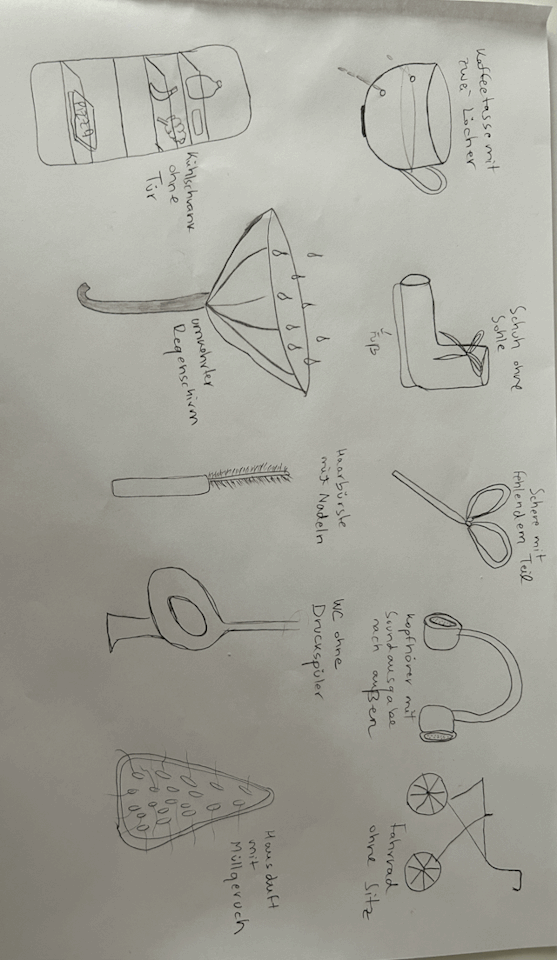
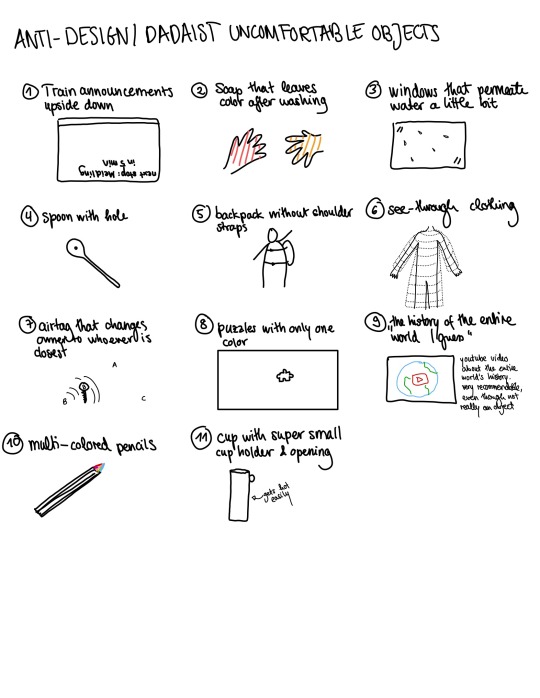
0 notes
Text
What is this blog about?
This is the platform for our thoughts and processes within the course Critical Design from the Technical University of Vienna in the summer term of 2024.
Have fun reading! Amelie and Diana
gandim: first person plural of gândi (Romanian thinking, reconsidering, imagining)
0 notes
Text
Task 1 - Conceptual Samples
1) Concept - Palace
A) Schloss Schönbrunn

The Schloss Schönbrunn is one of the most popular attractions of Vienna and is seen as one of the most important and most visited cultural assets of Austria. But the fascination with this palace and thus also the fascination with Empress Sissi, her husband Franz and the Habsburg dynasty is not questioned much in Austria. This can even be interpreted as a glorification and idealization of the time. Though this is a complex topic, this era was also shaped by elitist and authoritarian structures. Therefore it is worth thinking about the representation of history and our critical approach towards it. The Schloss Schöbrunn could even be the artifact for our critical look at the dynasty.
B) Joana Vasconcelos at Versailles

Joana Vasconcelos is a Portuguese artist that held an exhibition in 2012 in the Versaille palace. There were multiple exhibits each trying to portray modern aspects of luxury, such as a helicopter decorated with ostrich feathers, swarovski crystals and gold leaf. Shown above is the art piece "marilyn", which is made of stainless steel pots and pans. References can be made to Marie-Antoinette and her achievements as well as to the Dutch war through the choice of the steel. Interestingly, the most reflective piece of her exhibition is placed in the "hall of mirrors", where the important events in the french history were hosted. This is an interesting example, where one of the most important palaces is being used as a space for contemporary art, which evokes conversations about the female role within royalty, about the significance of such buildings and about past and modern elitism. https://www.vasconcelosversailles.com/
C) Dismaland - Banksy
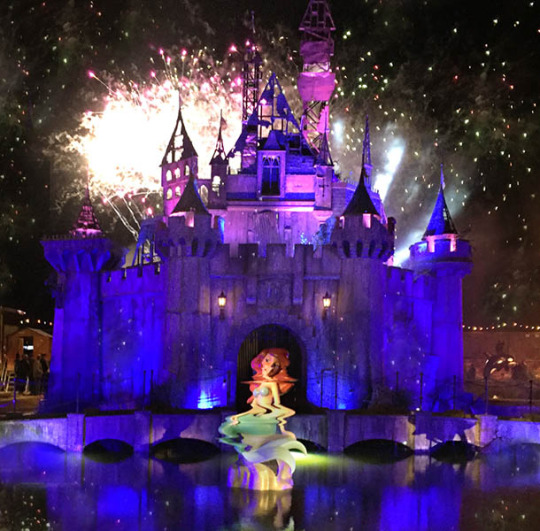
Dismaland is a parody by Banksy about the amousement park Disneyland. The exhibition was an actual amusement park which was opened in 2015 in England for about a month. While this installation is a rather distant connection to castles or palaces, it uses the symbol of the most well known amusement park - the castle of Disneyland - to create the direct connection. Through this connection the installation offers space for artworks and topics that Banksy deems more relevant, such as hostile design, banks or the treatment of refugees. https://dismaland.co.uk/

2) Concept - Design for Disassembly
A) Circle House in Lijsberg, Denmark
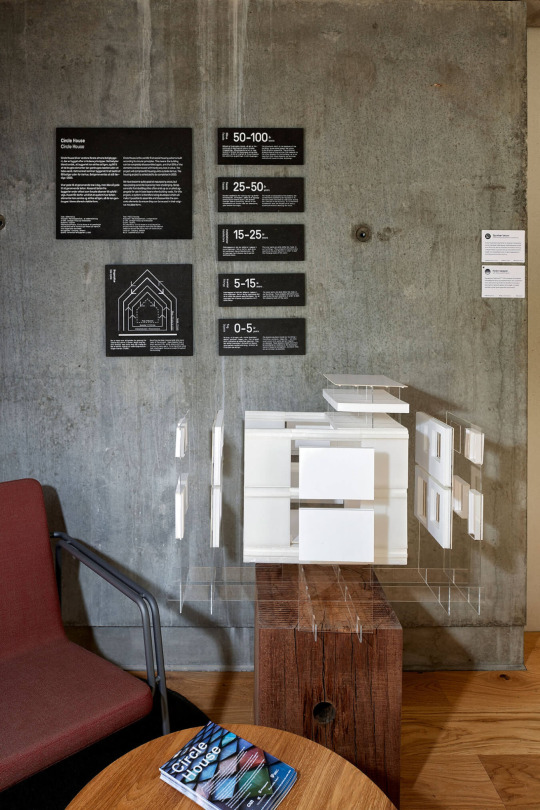
The term design for disassembly originated in the field of architecture where it is the goal to avoid demolition through disassembly to recycle and reuse resources. Circle House was designed with the concepts design for disassembly and circular economy in mind. Over 90% of the house materials are supposed to be reusable, there are instructions about the disassembly in place, it is a modular build to enable extentions. Some materials even include RFID chips to view a material passport. This is a very classical example of design for assembly. https://www.buildingsocialecology.org/projects/circle-house-lisbjerg/
B) Disassembly Line - Wiena Li

This is an interactive art exhibition, where users are invited to disassemble and deconstruct reclaimed electronic waste. Parts of the waste are then reused into art objects. In the center there are documentations about the end-of-life of electronic devices and a round conveyer belt. While the participants disassemble the electronics in search for valuable parts they ressemble the workers in the factories as well as the underprivileged people that normally deal with this hazardous type of waste. This sparks a conversation about design for disassembly as this is often not the case with electronics. https://www.wienalin.com/disassembly-nyc/
C) Wooden Peg - Studio Gorm

Wooden peg is a furniture system from the Studio Gorm. Here legs and tops are interchangeable to create different-sized furniture pieces as needed. They can then also be stored on the wall if not needed. This is an example of design for disassembly in a more literal form. Here the focus is less on the purpose of the parts after usage but rather to use disassembly to enable reuse and prevent the furniture to get obsolete. https://studiogorm.com/peg
3) Concept - Nutrition
A) Sugar Sphinx - Kara Walker

This art installation by the artist Kara Walker is entirely made out of white bleached sugar. Through the use of sugar and installing this large-scale artifact inside a sugar-factory, it references the sugar cane slavery with the words "an Homage to the unpaid and overworked Artisans who have refined our Sweet tastes from the cane fields to the Kitchens [...]". https://www.ilr.cornell.edu/buffalo-co-lab/subtlety-the-sugar-sphinx
B) Supersized Crotchet Food - Sabina Schleich

This is one example of the artifacts that Sabina Schleich is crocheting. Through the creation of different oversized food items, her goal is to raise awareness about the fast food consumption and food waste in the modern world. https://www.designboom.com/art/supersized-crotchet-food-sabina-speich-food-waste-05-23-2022/
C) Food for thought: "Foodprints" exhibition - Vienna Museum of Science and Technology
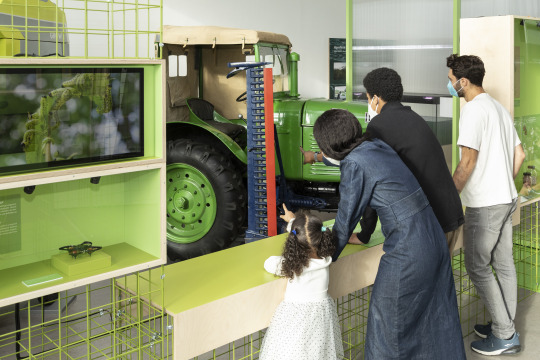
Food is a physiological non-negotiable for every human and living creature, as well as a strong enactment of culture with its striking diversity. At the same time, it is also a central aspect to our overall health and wellbeing. As the well-known saying "We are what we eat" suggests, it is important to raise our awareness regarding a variety of aspects around food production and consumption.
The interactive exhibition "Foodprints - Kann man das essen?" within the Vienna Museum of Science and Technology attempts to offer its visitors, from young to old, enriching insights around nutrition and food, ranging from the functioning of current supply chains in the food industry, to topics like satiety and enjoyment. Very importantly, the exhibition's focus is also placed on the sustainable aspect of food production and consumption, providing knowledge about the price at which our food is palatable - famine in numerous developing countries and an increasingly polluted planet. https://www.technischesmuseum.at/exhibition/foodprints_1
1 note
·
View note





